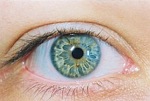
CNet’s David Carnoy weighed in on the debate over whether or not e-book reading on LCD screen causes more eyestrain than when reading on an e-Ink screen. For him, it doesn’t matter, but he apparently understands that for other humans it can be a problem though he prefers to think that it’s not due to the LCD screen that others have a problem.
In my own case — with a focus only on words one after another against a background that puts light right into my eyes, there’s quite a difference.
I (and others report the same) can read a book on e-ink for hours but on my LCD screen, which I DIM — and it has a reputation for being an excellent screen) — I can read an e-book for no more than 20 minutes. I then need to squint my eyes to continue, no matter how far down I dim that light. I also use a lamp to help my eyes adjust to the light difference between the light source (LCD) and surroundings, and that helps me read books for about half an hour. I do it only because I like to see some of the color illustrations on my Kindle 4 PC.
Yet, I can surf the web on a computer of any type for 10+ hours a day without a problem because in surfing the web your eyes are looking all over the place and get to relax from one short-term position of focus, with images and other stories to catch your eye (as with a paper newspaper). That’s why it’s called surfing … or browsing. It’s not a heavy focus on just one plain-text word after another, contained, with not much movement of the eyes for relaxation and then, with that more intense form of light (vs reflected light from e-ink screens) coming into your eyes, it has more effect on some of us.
Carnoy gets a quote from Barnes and Noble’s CEO, William Lynch, that B&N did “extensive research on displays” and “discovered” that “eyestrain with LCDs was not the huge issue many people were making it out to be.” He added that B&N is using a “high-resolution next-generation panel from LG” that is backlit with LED.
Carnoy then asks his optometrist for his take on this and reports that the doc doesn’t feel there’s that much to the eyestrain idea. It doesn’t matter, he feels, if a light is shining into your eyes when you are doing serial reading (words in a string) for long-form sessions as opposed to short magazine reading or surfing the web. He doesn’t believe today’s LCD screens cause any eyestrain for anyone but that it’s just a matter of “aesthetics” whether they prefer an LCD screen or an e-Ink one for reading.
In the comments section for the article, some point to differing light-sensitivity that people have. One would think that was common (and good) sense.
But the most interesting Comment of all to that article was one which I’ll put here, as his explanations for perceived or reported LCD eyestrain comes from someone who has studied this at length and of course has reasons for his most definite bias, as he is a co-founder of e-Ink:
‘ Hi David,
While LCDs are adequate for reading, E Ink was invented and engineered for the best possible reading experience. Your readers might like to hear about a few technical factors that are not well known and contribute to the difference:
1. Ambient brightness
Over the years many people have told me that reading an emissive display is bothersome to them while E Ink is not.I think one reason is that as you read, your eyes skip along the lines of text, dwelling for a fraction of a second on small groups of words. Your eyes are constantly moving ? hundreds of times per minute. So it is very important that your eyes be able to refocus on the surface of a screen within a split-second.
Emissive displays are ill-suited for this. While you are reading a book, you see a lot more than the screen. Your field of vision is wider than the page alone and your eyes often glance off the page. With a backlit screen, every time your eye switches from a bright screen to the dimmer ambient room, your eye muscles must make an adjustment. And the more adjustments, the more chance for eyestrain.
With paper or E Ink, the page is the same brightness as everything else in the room. Your eye needs less adjustment effort to go back and forth. You can see and understand information more immediately. Paper is the ultimate “glanceable” display and that helps improve comprehension and maximize reading speed.
2. No parallax / closer to the eye
Have you ever gazed at a calculator display and noticed a bit of a shadow? That is parallax. The same thing happens on your emissive LCD. The white color is actually coming from a backlight behind the LCD; the black color is coming from a shadow cast by the liquid crystal material in the middle of the LCD glass sandwich. So black and white are different distances from your eye. This degree of shadowing changes with the viewing angle. There are also two sheets of glass and multiple polarizer films between your eye and the white background, which creates a slight feeling of separation between screen and real world.
In an E Ink display, the electronic ink contains black and white particles that are both moved physically by electrophoresis to the front of the display. So both black and white are exactly the same distance from your eye. Furthermore, both are at the front pressed up to the top layer of glass. This greatly contributes to the feeling that the information is printed on the top of a page.
3. Less glare
All E Ink display surfaces are treated to be matte like a printed page. Most LCDs are not. This is not an obvious feature when you buy the product, but it makes a huge difference to legibility in some settings.
4. Same contrast across the entire page
Although modern LCDs have greatly improved their viewing angle uniformity, there is still a detectable difference in contrast ratio across the page. These differences in contrast make it just a tiny bit harder to resolve images as your eye skips along the page. As the screen gets larger or closer to your eyes, as with a handheld book, this angular difference is increased.
5. No aperture ratio loss
The pixels on LCD screens do not have a full aperture ratio, because each pixel must be separated by a black border. The border hides the underlying transistor and separates the areas of the color filter. There are actually 3 sets of borders per pixel, since color LCDs have RGB subpixels. This all adds up to tiny black gaps between each pixel. As LCDs reach higher resolutions there are even more dead gaps as a percentage of viewing area.
E Ink screens have a 100% aperture ratio. There is no black mask and no black border between pixels. When two neighboring pixels are white on an E Ink screen, the pixels merge to form a solid block of white. Therefore the blacks and whites on an E Ink screen are uniform, again improving image quality.
Russ Wilcox, co-founder E Ink <– absolutely biased in favor of E Ink! =) ‘
This is all a concern as some of us are considering, as a SECONDARY e-reader, the coming NookColor, for color magazine reading or for photography and travel books. Also of interest is the ePub (but not its proprietary form of Adobe DRM) and library capabilities *IF* the new Nook functions better than the eInk Nook does (and certainly better than it did in its first buggy half year) as I find its menu system and processes have too many steps, it’s too slow to respond (when you’re used to the Kindle (UK: K3)), and the Nook’s search and annotations systems are quite poor.
But also of interest is that it will view though not edit Microsoft Office documents.
Searches can function as ‘flipping’ through a book in search of something and that’s important to me, as is the dictionary function being right on the front screen as it is for both the Kindles and the new Sony e-readers. Annotations should be FINDABLE rather than depending on your ever reaching those pages again (a drawback of the current Nook).
However, the new Nook software update coming may help. Oddly, Engadget’s look at the NookColor the other day left them feeling the NookColor has to be sped up, even though it’s not an eInk device. B&N has another two weeks to get it ready for reporters to touch (they wouldn’t let Engadget operate it).
As of now, I’m also looking at the fact that the NookColor is almost one pound (15.8 ounces) and gives “up to” 8 hours on a battery charge, and it takes 3 hours to do a full charge.
Those are drawbacks to it being a primary portable e-reader, but the color will entice, even if it is an LCD screen and we now know whatan LCD screen is like, for book-reading outside where the sun shines. There should be a good market for it though, from people who won’t need to use it outdoors and who want color above all else and have not bought an e-reader because of the lack of color. I imagine that’s a large potential market.
I’ll be writing more about the NookColor, but I would personally not, at this point get a color LCD screen device as my primary ebook reader but am considering the new Nook as a supplemental e-reader and also because I’m a long-time B&N member and want them to survive, as they’re not in the best financial shape currently but should certainly make it through fine if they do things right with the Nook.
It’s important to me that their bookstore in my neighborhood, which I like to visit, stays, when the 3 others in this area gave up the ghost this past year.
The IPad has a great screen but is decidedly not pleasant for me to try to read a book on although some others can do it (the Nook will add an anti-glare coating and it’ll be interesting to see how effective that is), but the market shows clearly that the Kindle’s eInk screen is a huge attraction for avid book readers and many of us are reading and buying books much more than we used to because it is so strangely pleasing to read on an e-Ink screen and with the Kindle’s features and functioning.
That’s a good reason for B&N to keep the E-Ink model, as the new model does not ‘replace’ that but is an addition to the line. The new model will not offer 3G access and will depend on WiFi networks in the home or available nearby.
PC World’s TOP 5 Tech Products of the year (out of 100 chosen)
PC World’s Cody Hahn reports on their pick of the top 100 best technology products for 2010.
The surprise for many in this was that “Google Android 2.2” is number one rather than the Apple iPad. They also list their Top 5 tech products and services:
. Google Android 2.2
. Apple iPad
. Amazon Kindle (third generation)
. Netflix
. Samsung Galaxy Tab (7″ tablet with flash and 2 cameras)
No surprise that the Kindle 3 is in the bunch.
Via Andrys Basten’s A Kindle World Blog


















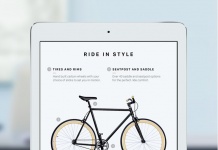
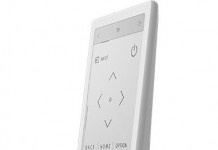
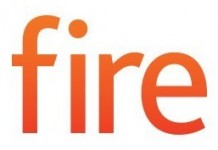

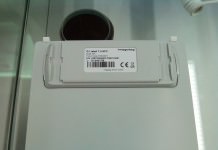











If Russ Wilcox has some actual scientific data or extensive test results of LCD vs. eInk and eyestrain, I’m pretty sure E-Ink would have published them by now. I’m pretty sure Amazon and B&N would also have published the results of their internal research (which I’m sure Amazon has done extensively) on the issue, for marketing purposes alone.
Russ Wilcox’s reasonings, while interesting and all “scientificy sounding”, have nothing to do with proving there is more eyestrain from LCDs vs. EInk. Because, there is no scientific proof of it, yet.
Looking forward to the color Nook, and to other manufacturers moving to LCDs and other new technologies (Mirasol, etc.) for reading, without the quasi-religious adherence to eInk technology.
I don’t get eyestrain from reading on an LCD screen, but it makes it a lot harder for me to concentrate, especially on fiction. I’m a huge fan of the original Nook, but because of the LCD screen, the NookColor is not for me. I’m hoping other ebook reader manufacturers don’t follow B&N’s lead and move to LCD; I know I’m far from the only person who prefers a non-backlit screen, though, so I don’t think non-backlit ebook readers (e-ink and whatever comes after it) will be going away.
There is room for LCD (gray scale and color) and e-ink displays. Think about what you read and where you do most of your reading. That will guide you.
I think the case for back lighting and eye strain is largely circumstantial and reminds me of the argument that reading traditional books is a superior experience to reading an e-book. If your eyes are sensitive to back lighting then an LCD reader is not for you. If you read outdoors a lot an LCD reader is not for you. If you read a lot in low light environments than e-ink may not be for you. (unless you are a fan of book lights… I’m not) If you need color e-ink is not there yet, but it is close.
My personal use case is reading books, maybe one a week, in bed or a normally lit room. I use two old LCD gray scale readers. The Rocket eBook and the eBookwise reader. Back lighting does not bother me and I can read for hours with no eyestrain. I keep the illumination level at 20-40%. At this level I get 18 to 22 hours of reading per battery charge. That gets me through a long weekend+.
I don’t read e-magazines or e-newspapers so color is not a big deal for me. I have been concerned that e-ink was going to completely supplant LCDs in the e-Reader market. I am happy that now appears not to be the case. I am still looking for a company to produce a reader using something like the Pixel-Qi, functioning as an emissive display or reflective e-ink like display.
I am thankful that e-ink has kick started the e-reader business. I doubt I will ever own an e-ink reader and will keep using my old readers until they fail or a good LCD replacement appears.
I got stuck in a waiting room the other day and noticed I, personally, get eye strain from reading traditional print color magazines! LCD, however, is perfectly comfortable.
I sounds like everyone’s eyes are different. I’m 27, so maybe you just adapt to what you grew up with.
I may get tired of waiting for a good LCD-based eReader. If I do, right now the Sony PRS-950 (Daily Edition) would be my choice for an eInk-based reader.